Ninan Auassat: We, the Children
Ninan Auassat : Nous, les enfants
Kim O'Bomsawin
2024
| 93 min
Documentary
Original French, English, Innu Aimun and Attikamekw version, English subtitles
Awards and Festivals
TIDES Award for Best Canadian DocumentaryVancouver International Film Festival, Canada (2024)
Magnus Isacsson AwardRencontres internationales du documentaire de Montréal, Canada (2024)
Official SelectionFestival international du cinéma francophone en Acadie, Moncton, Canada (2024)
Official SelectionRendez-vous Québec Cinéma - RVQC, Montreal, Canada (2025)
Known for her intimate and riveting films, director Kim O’Bomsawin now invites us to experience the vibrant universe of Ninan Auassat: We the Children. Shot over more than six years, the film brings us the moving stories of three groups of children from three different Indigenous nations: Atikamekw, Eeyou Cree and Innu.
In following these young people through the crucial milestones of childhood, right to the threshold of adulthood, we witness their daily lives and aspirations, along with the challenges they face.
Filmed from “a child’s eye-view” and presenting a groundbreaking vision of contemporary Indigenous youth, this documentary is notable for the complete absence of adult voices and “experts on young people”—holding space instead for a new generation with a burning desire to be heard.
The result is a captivating journey that becomes a call to action, at a time when the voices of young people echo, demanding the right to be recognized and an opportunity to blossom.
Pronounciation
Trailer
ONE LINER
A powerful film shot from “a child’s eye-view” without the voices of adults, this documentary reveals the dreams of a new generation poised to take flight.
LONG SYNOPSIS
Known for her intimate and riveting films, director Kim O’Bomsawin now invites us to experience the vibrant universe of Ninan Auassat: We the Children—an immersive documentary celebrating the power and vitality of Indigenous youth.
Shot over more than six years, the film brings us the moving stories of three groups of children from three different Indigenous nations: Atikamekw, Eeyou Cree and Innu.
In hearing their heartfelt, raw stories and the ways they understand their history and experiences, we are plunged into the world of their dreams, learning about the issues that concern them and their hopes for the future. We follow these young people through the crucial milestones of childhood, right to the threshold of adulthood, witnessing their daily lives and aspirations, along with the challenges they face.
Ninan Auassat: We the Children transcends cultural barriers, presenting a groundbreaking vision of contemporary Indigenous youth—one that highlights their courage and sincerity. Filmed sensitively and from “a child’s eye-view,” this documentary offers a deeply human perspective that encourages listening and mutual understanding.
The result is gripping and powerful. In the complete absence of adult commentary and “experts on young people,” the film holds space for the new generation. Ninan Auassat: We the Children is a bold cinematic statement that reveals a burning desire to be heard. As the young people’s voices echo, demanding the right to be recognized and an opportunity to blossom, their journey becomes a call to action.
Q&A with Kim O’Bomsawin
Where did the idea for this film come from, and how would you situate Ninan Auassat: We the Children within your body of work?
The idea germinated for a long time. Ever since I made my first film, The Red Line (2014), I’ve been drawn to First Nations subjects. I really wanted to show something different from the usual negative portrayals (addiction, violence, etc.) because when I went into communities, I would see wonderful, eloquent young people who knew what they needed to flourish. I found these stereotypes really infuriating. I really wanted this film to showcase the voices of young people, told from a “child’s eye-view,” without any adults speaking for them. I took the idea to the NFB and pitched it to the producer at the time, Colette Loumède, who supported the project. The original intention was to film over a period of six years. There was an interruption caused by the pandemic, but in the end that allowed me to follow the young people through three important stages of their journeys: from early childhood to childhood, from childhood to adolescence and from adolescence to young adulthood.
How did you go about finding the protagonists?
Over the years, I gained quite a deep knowledge of the different communities and developed relationships with the people. It was that extended network that helped me find the young protagonists for my film. For example, I’ve known young Legend since she was a baby, I really like her family, and I’ve been able to watch her grow up.
I also wanted the young people to come from different territories—which also serve as characters in the film—and from communities with different cultural representation.
What surprised you the most about these young people?
Their words didn’t actually surprise me. Given their different backgrounds, I was fully expecting the range of their life experiences and their voices to be powerful. For example, Legend’s family places a lot of importance on spirituality, and she talks about that. One of the teens in Pessamit speaks very maturely about seeing hard things when she was far too young. We also see the close bonds between brothers and sisters.
How did you maintain a connection with your protagonists over the six-year period?
It was easy for me to stay in touch. For example, I could reach out on Messenger to check in with them and find out their news. When COVID hit, we just waited for it to pass. That also meant I could really see the changes when I was able to return to their communities.
What does making a film from “a child’s eye-view” mean to you? In other words, why was it important for you to make a film where we hear the voices of young people only?
I was 100 percent committed to hearing only their voices and not those of adults or experts. Young people are the real experts on who they are.
A number of films about the experiences of Indigenous Peoples have been released over the last several years. Have you noticed any trends or an evolution in how younger generations are being represented?
Yes. The biggest change is that we’re managing to move beyond trauma. That’s a step forward; it’s progress. We’re making films about other things—on less dark subject matter, like the beauty of youth. For example, we’re seeing comedies now, current productions that aren’t dramas. It’s important to note that audiences have also become more open. It’s as if we’ve now gone beyond “First Nations Realities 101.”
How can narrative sovereignty contribute to more accurate and equitable representation of Indigenous communities in the current film and media landscape?
Narrative sovereignty is maybe a bit of a clichéd over-statement, but what it really means is, “Nothing about us without us.” That’s the foundation, and it’s a paradigm shift. It’s really important that these stories be told by people from First Nations and that they are the driving force behind their own representation. This doesn’t exclude co-creation with non-Indigenous artists. In fact, I would say that’s desirable.
How do you see the role of film and audiovisual media more generally in preserving and promoting Indigenous languages?
It’s essential. It’s one of the tools we have, and without it we don’t know what exists. The screen brings different peoples into the collective consciousness and makes people proud to hear their language. We also must recognize that Indigenous languages are in danger too, not just French. It’s important that they be represented and heard.
What are you hoping the impact of the film will be?
It’s not just a film on Indigenous youth, but on youth in general, from an Indigenous point of view. It’s pretty universal. First of all, I hope that we can think about highlighting the voices of young people—who they are and what they know. Second, I hope to kindle pride in the youth of our people, so that they see themselves and recognize how beautiful they are. Instead of having negative or difficult images of youth, they’ll be able to see positive role models with their families: “ordinary children” who represent the future of their Nations.
Poster
Excerpts
Images
Loading...
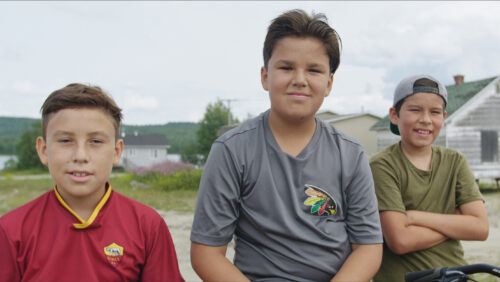
Download
Loading...
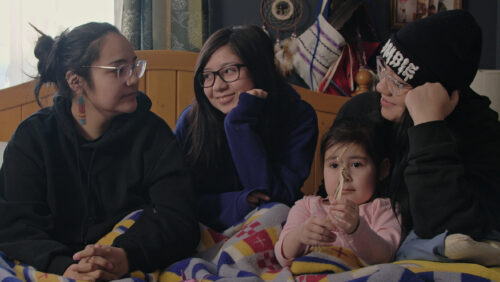
Download
Loading...
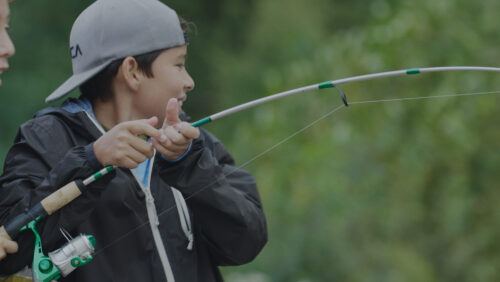
Download
Loading...
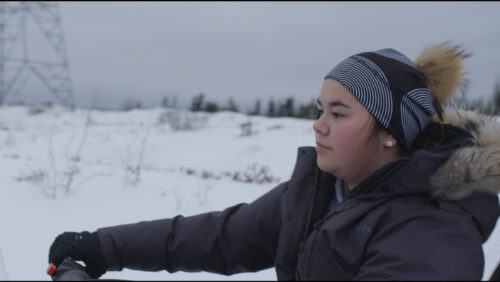
Download
Loading...
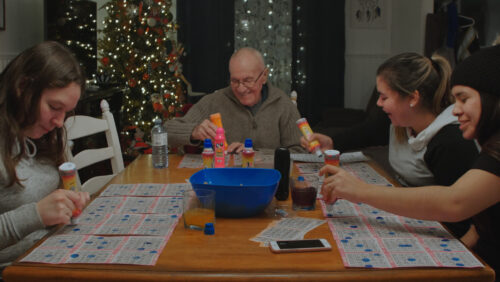
Download
Loading...
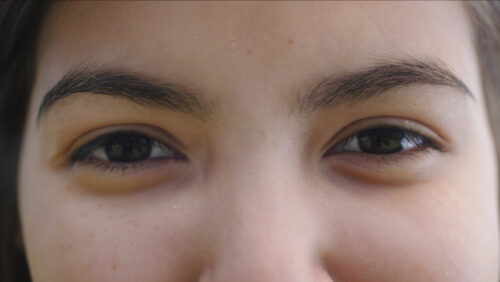
Download
Loading...
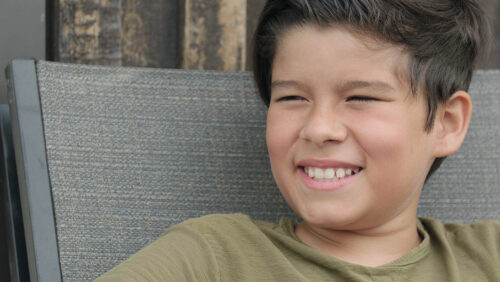
Download
Loading...
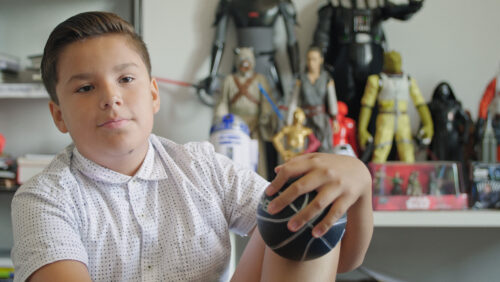
Download
Contact NFB Publicist for high-resolution images for print.
Team
Kim O'Bomsawin
Director
Photo
Photo : Christinne Muschi
Mélanie Brière
Producer
Photo
Photo : Valérie Sangin
Nathalie Cloutier
Producer and Executive Producer, NFB
Photo
Photo : Valérie Sangin
Colette Loumède
Producer and Executive Producer
Photo
Photo : NFB
Credits
A film by
Kim O’Bomsawin
Produced by
Mélanie Brière
Nathalie Cloutier
Colette Loumède
Editing
Alexandre Lachance
Cinematography
Hugo Gendron
Location Sound
Lynne Trépanier
Sound Design
Luc Raymond
Original Music
Wyler Wolf
End credits
With the participation of
Monique Benjamin Hervieux
Legend Iserhoff
Rain Iserhoff
Jade Mukash
Saige Mukash
Matapew Ottawa
Zachary Ottawa
Alyssa Pitcoutlaigan
Isaac Verreault-Lambert
Jessica Vollant
Maïka Vollant
And of
Laurence Bacon-Morissette
Raphaël Bernadette
Andy Canapé
Yanissa Chilton
Kellya Échaquan
Jérôme Flamand
Jerrycko Flamand
Jimmy Flamand-Black
Camille Goubil
Sam-Ivan Nequado
Jouan Ottawa
Layannah Ottawa
Maggie Ottawa
Lyvia Ottawa Dubé
Steffi Ottawa Dubé
Guyane Quitich
Izaak Quitich
Evanne Quitich-Boivin
Dana Vollant
Molika Iana Vollant
Zachary Vollant-Vachon
Researched, Written and Directed by
Kim O’Bomsawin
Produced by
Mélanie Brière
Nathalie Cloutier
Colette Loumède
Editing
Alexandre Lachance
Cinematography
Hugo Gendron
Location Sound
Lynne Trépanier
Sound Design
Luc Raymond
Original Music
Wyler Wolf
Additional Images
Michel Valiquette
Additional Sound Recording
Alain Auger
Andrés Solis Barrios
Camera Assistant
Louis-Philippe Michaud
Production Assistants
Nina Bouchard
Saige Mukash
Maggie Ottawa
Annick Picoutlaigan
Julie Verreault
Editing Assistant
Mathieu Quintal
Technical Support – Editing
Pierre Dupont
Marie-Josée Gourde
Patrick Trahan
Transcriptions
Alice Faucher
Translation
Joséphine Bacon
Jani Bellefleur-Kaltush
Isabelle Kanapé
Alexandre Nequado
Katherine Nequado
Gabrielle Vachon Laurent
Translation and Subtitling
Trans & Sub Coop
Titles
Mélanie Bouchard
Online Editing and Colourization
Yannick Carrier
Foley
Lise Wedlock
Foley Recording
Geoffrey Mitchell
Re-recording
Shelley Craig
Additional Music
“Tshekuan Mak Tshetutamak (Qu’est-ce qu’on va faire)”
Composed and performed by Philippe McKenzie
With the permission of CBC Northern Service, QCS 1466/1979
“Migwetch”
Composed and performed by Sakay Ottawa
“I Miss You”
Composed and performed by Isaac Verreault-Lambert
Thanks to
The children in the communities of Pessamit, Manawan and Whapmagoostui
École secondaire Otapi
École secondaire Uashkaikan
Whapmagoostui Sundance Organization
Matthew A. Iserhoff
Matthew Mukash
Natasia Mukash
Danielle O’Bomsawin
Kelly Canapé
Adeline and Bastien Picoutlaigan
Alain Picoutlaigan
Henri Picoutlaigan
Eve-Aurely Rousselot
Ronald Rousselot
Marie-Claire Vachon
Mya Vollant
Maggie Ottawa
Sakay Ottawa
Julie Verreault
Jérémie Battaglia
Diane Bilodeau
Jean-François Caissy
Mathieu Fournier
Marc Larouche
Valérie Latreille
Charlotte O’Bomsawin
Johanne and Yvon O’Bomsawin
Ophélie O’Bomsawin
Legal Advisor
Julie Patry
Media Relations
Nadine Viau
Marketing Manager
Karine Sévigny
Johanna Lessard
Marketing Coordinator
Julie Fortin
Administrator
Sia Koukoulas
Senior Production Coordinator – Administration
Brenda Nixon
Senior Production Coordinators
Joëlle Lapointe
Chinda Phommarinh
Production Coordinators
Alexandra Bourque
Lucia Corak
Coralie Dumoulin
Alexandra Levert
Studio Coordinators
Gabrielle Dupont
Stéphanie Lazure
Pascale Savoie-Brideau
Technical Coordinators
Julien Archambault
Daniel Claveau
Jean-François Laprise
Line Producer
Mélanie Lasnier
Executive Producers
Colette Loumède
Nathalie Cloutier
A production of the National Film Board of Canada
Quebec, Canadian Francophonie & Acadian Documentary Studio
© 2024 NATIONAL FILM BOARD OF CANADA
Media Relations
-
About the NFB
For more than 80 years, the National Film Board of Canada (NFB) has produced, distributed and preserved those stories, which now form a vast audiovisual collection—an important part of our cultural heritage that represents all Canadians.
To tell these stories, the NFB works with filmmakers of all ages and backgrounds, from across the country. It harnesses their creativity to produce relevant and groundbreaking content for curious, engaged and diverse audiences. The NFB also collaborates with industry experts to foster innovation in every aspect of storytelling, from formats to distribution models.
Every year, another 50 or so powerful new animated and documentary films are added to the NFB’s extensive collection of more than 14,000 titles, half of which are available to watch for free on nfb.ca.
Through its mandate, its stature and its productions, the NFB contributes to Canada’s cultural identity and is helping to build the Canada of tomorrow.